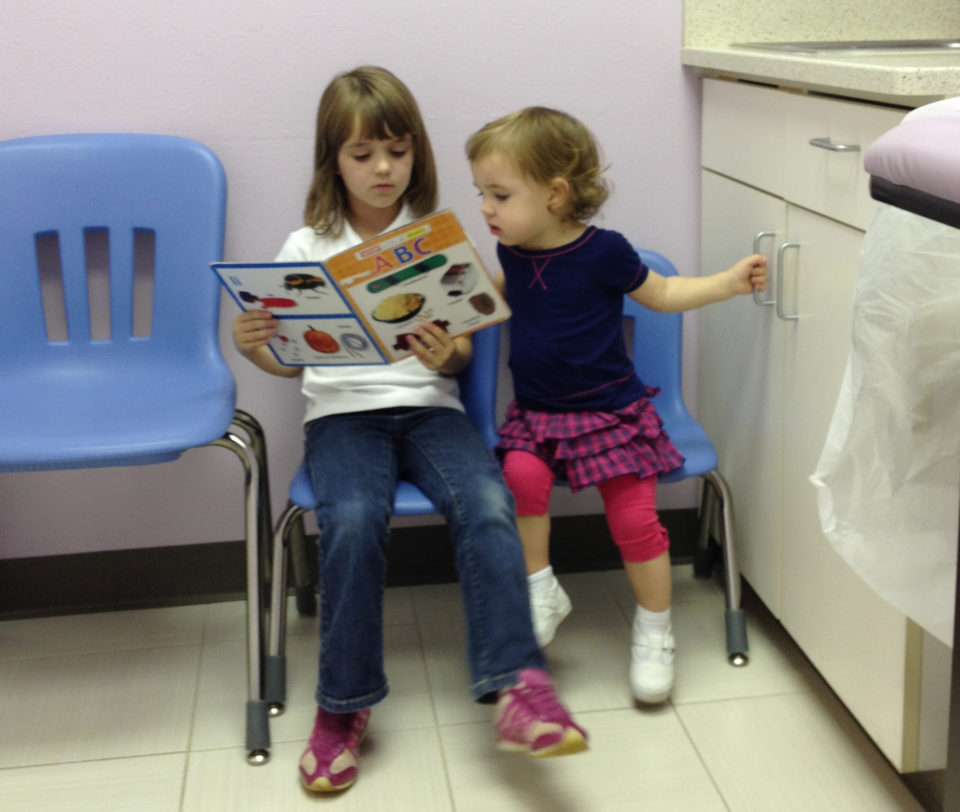What are the Three T's of building a child's brain
- June 16, 2017
- / Shannon Nickinson
- / early-learning

The more words a baby hears, the better.
But what is the best strategy for making sure your baby's brain gets fed all the words it needs to be healthy and ready to learn by kindergarten?
In her book, Dr. Dana Suskind advocates the three T’s — Tune In, Talk More and Take Turns. These strategies can help parents talk more with their children. That crucial interaction is the key to building a child’s brain so that it will be healthy, active and ready to learn.
Tune In
— It means as the adult, pay attention to what your child is interested in at the moment. The part of a young child’s brain that allows them to switch focus is not fully developed. They will focus on only what they are interested in, even if that interest only lasts for five minutes.
— If they are stacking blocks, don’t make them quit stacking blocks to listen to a story. Stack blocks with them and while you’re there, talk about the blocks — their color , how many, which ones are shaped like rectangles or squares, etc.
— Digital distractions — smartphones and tablets — are not in the picture.
— It means using child-directed speech — changing the tone and pitch of your voice to the singsong rhythm that appeals to young ears and brains. Repetition is key. You will get tired of reading the same story long before your child will get tired of hearing it. Keep reading it anyway.
— It means responding warmly when a newborn cries. Studies show that newborns whose cries are left unattended suffer “toxic” stress. If that continues over time, it damages the child’s brain and makes it harder for that child to learn, trust others and control his or her emotions.
Talk More
— It means narrating what you’re doing, even if your child is too young to respond. When you change a diaper, when you wash the dishes, when you do anything, talk about it to your child.
— It means using parallel talk — commenting on what your child is doing. “You found my purse! What’s in it? Keys. Hear how they jingle? Isn’t that loud. No, we don’t put keys in our mouth. They are dirty. We only put yummy things in our mouth like milk or bananas. Keys are for opening the door. See?”
— Between the ages of 3 and 5, children start to use language to talk about things they don’t see right at that moment — about a toy they’ve played with before or a place they’ve seen.
— It means extending the phrases they start to say into full sentences. When your child says “Uppie, uppie,” you should respond, “Do you want daddy to pick you up? I would love to pick you up and carry you on my shoulders!”
Take Turns
— It means responding to your child in conversation even before she has real words. When your baby makes a sound, it’s her way of trying to talk to you. Answer back, even if you feel silly doing it.
— As your child ages, ask “how” or “why” questions about things. It forces your child to start building problem-solving skills.
Studer Community Institute staff created a series of tips to help give parents advice about how to do this. You can find them here.
 CivicCon launches with a look at good growth in cities
CivicCon launches with a look at good growth in cities
 Building stronger brains one baby, one parent at a time
Building stronger brains one baby, one parent at a time
 SCI debuts commercial on Early Learning City
SCI debuts commercial on Early Learning City
 Entrecon: World class speakers and an opportunity to sharpen skills
Entrecon: World class speakers and an opportunity to sharpen skills
 PYP Quality of Life survey 2017
PYP Quality of Life survey 2017
 EntreCon Pensacola 2016: A look back
EntreCon Pensacola 2016: A look back
 Leadership tip: getting better employee takeaways
Leadership tip: getting better employee takeaways
 Leadership tip: be interested instead of interesting
Leadership tip: be interested instead of interesting
 Leadership tip: delivering difficult messages
Leadership tip: delivering difficult messages
 Brain Bags boost Arc, Early Childhood Court programs
Brain Bags boost Arc, Early Childhood Court programs